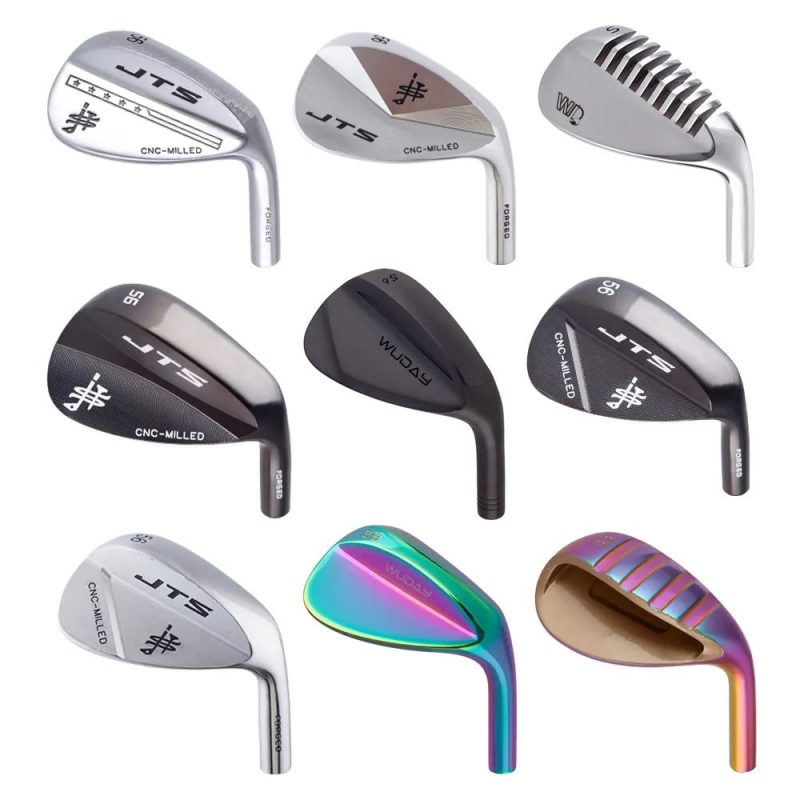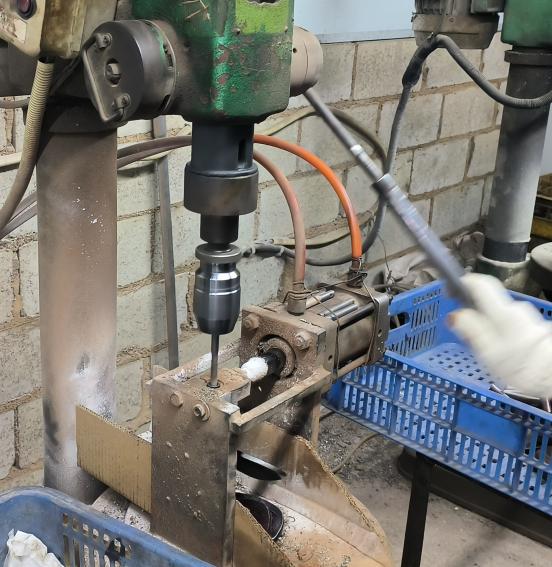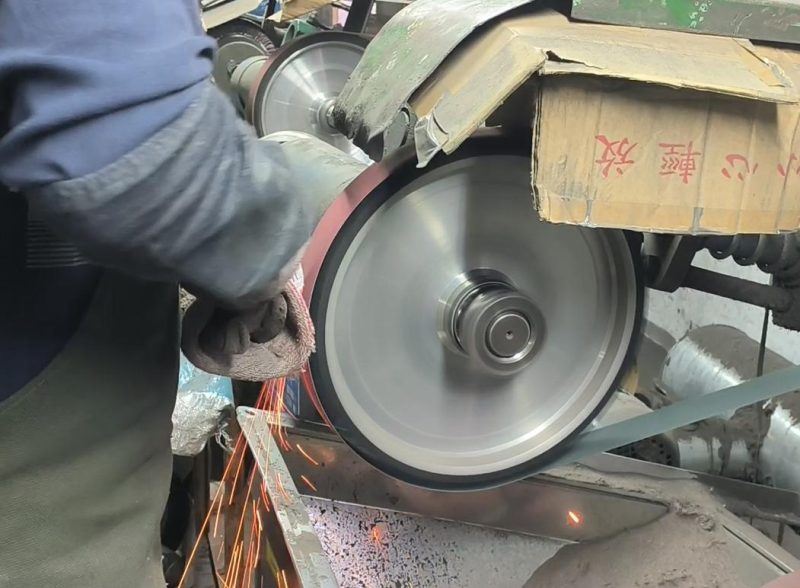How to custom golf wedge and choose right wedge for you
Customizing a golf wedge involves several steps that can help you tailor the club to your specific needs and preferences. Here’s a guide on how to go about it:
1.Determine Your Needs and Preferences:
Start by identifying what you want to achieve with your custom wedge.
Do you need it for a specific shot type, such as bunker shots or chipping?
Consider factors like loft angle, bounce, grind, and even the feel and weight of the club.
2.Choose the Right Manufacturer:
Research golf equipment brands that specialize in custom wedges.
Look for one that aligns with your style and preferences.

3.Select Your Base Model:
Once you’ve chosen a manufacturer, select a base model wedge that you can then customize. Manufacturers often have a range of models with different head shapes, materials, and technologies.

4.Adjust the Loft Angle:
The loft angle determines how high the ball will fly.
Customizing the loft can help you achieve more precision and control over different types of shots.
Decide if you need a higher or lower loft and make the adjustment accordingly.

5.Adjust the Bounce:
Bounce is the amount of club sole that contacts the ground at impact.
It’s crucial for bunker shots and playing out of rough. Customize the bounce to suit the type of terrain you frequently play on.
6.Choose the Grind:
The grind, or the shape and angle of the sole and leading edge, affects how the club interacts with the ground.
Manufacturers offer various grind options optimized for different conditions and shot types. Select the grind that best fits your game.

7.Personalize the Look:
Customize the look of your wedge by choosing the color of the paint fill, stamping your initials or a logo, and selecting a unique grip.
This adds a personal touch and can also help distinguish your wedge from others in your bag.
8.Order and Test:
Once you’ve made all your selections, place your order with the manufacturer or a trusted custom golf equipment specialist.
After receiving the wedge, test it thoroughly on the range and during actual rounds to ensure it meets your expectations.
9.Fine-Tune Adjustments:
If necessary, you can always make further adjustments to the loft, lie angle, or other specifications based on your testing and feedback.
Remember, customization can be a bit pricier than buying an off-the-shelf wedge, but it’s a worthwhile investment if it helps you improve your game and enjoy it more.
Choosing the right golf wedge involves several factors, including the type of shot you’re attempting, your skill level, and the course conditions. Here are some guidelines to help you make the right selection:
- Identify the Shot : First, determine what type of shot you need the wedge for. Golfers typically use wedges for shots around the green, including chips, pitches, bunker shots, and lob shots. Different wedges are better suited for specific shots.
- Types of Wedges :
– Pitching Wedge (PW): Typically has the highest loft among standard irons (around 45-48 degrees), making it ideal for longer approaches and full shots onto greens.
– Gap Wedge (GW): Falls between the pitching wedge and sand wedge, with loft angles ranging from 48-54 degrees. Useful for shots that require a bit more height than a pitching wedge.
– Sand Wedge (SW): Designed specifically for bunker shots, with loft angles usually around 54-58 degrees. Provides plenty of spin and trajectory to escape bunkers and handle softer turf conditions.
– Lob Wedge (LW): The highest loft among wedges, often 60 degrees or more. Perfect for high, soft shots over obstacles or when stopping the ball quickly on the green.
- Skill Level: As a beginner, start with a pitching wedge and a sand wedge. As you improve, consider adding a gap wedge and/or lob wedge to your bag for added versatility. Advanced players often carry two or all three types of wedges.
- Bounce: Bounce is the angle at which the leading edge of the wedge is angled away from the ground. Higher bounce is better for softer sand or deep grass, while lower bounce works well in firmer conditions or tight lies.
- Feel and Comfort:Try out different wedges to see which feels best in your hands and produces the results you’re looking for. Some players prefer heavier or lighter clubs, or ones with specific grip sizes or materials.
- Course Conditions: Consider the courses you play most often. If you frequently encounter bunkers or other obstacles, a sand wedge or lob wedge may be more valuable. Conversely, if your courses are mostly flat with few hazards, a pitching wedge or gap wedge might suffice.
In summary, choosing the right golf wedge involves understanding your needs, skill level, and the conditions you play in. Experiment with different wedges and find the ones that best complement your game.
